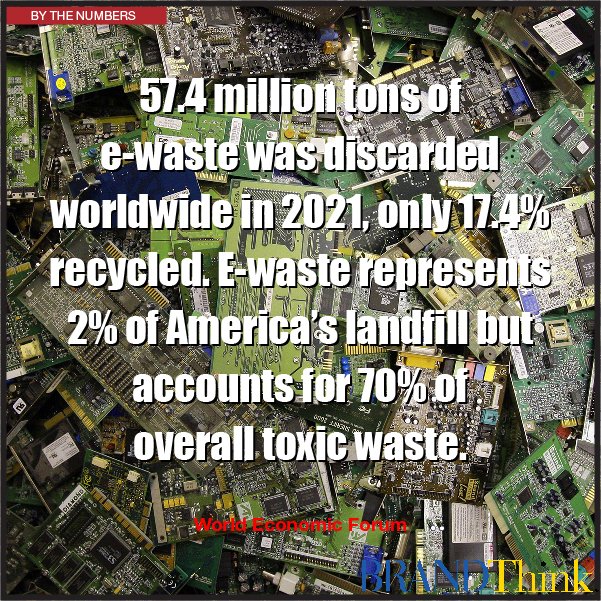Where are brands in all this?
What responsibility do brands have in supporting environmentally sustainable recycling efforts? We live in a disposable society trashing technology that is not actually disposable. What did you do with your old iPhone? Many brands have recycling programs, but few, if any, push them.
In some cases, you have to dig to even find mention of them. Is this another case of brands greenwashing with a recycling message without really making an appreciable effort? Is this just another cheap way of satisfying ESG needs driven by shareholders and vacuously trying to satisfy consumer perceptions?
Maybe so. What we do know for sure is that millions of tons of e-waste are sent to India every year, where men, women, and children risk their health to rip apart old phones, keyboards, TVs, and computers for a screen or a scrap of precious metals. Many more tons go to Hong Kong, Ghana, and West Africa. It is a dangerous calling for people to scavenge for recyclable e-waste, but there is money in it. Recycling 1 million cellphones can recover 20,000 lbs. of copper, 550 lbs. of silver, 50 lbs. of gold, and 20 lbs. of palladium, reducing the damage and pollution done by mining these metals
E-waste must be recycled professionally and carefully discarded in a proper environment with proper safety protocols. Unqualified laborers poison themselves, develop cancer, and damage their nervous systems by digging through mounds of e-waste just to find a screen or a scrap of precious metal. On a global scale, the human and environmental toll of the work is impossible to calculate, but make no mistake, it is significant. And given the unrelenting advancement of technology, not likely to lessen any time soon.
It would seem that a cooperative approach between all electronic manufacturers in a unified and committed recycling effort would make the world a better place. Brands have to take more tangible roles in addressing this crisis, like building on Basel Action Network’s responsible recycling e-waste pledge

